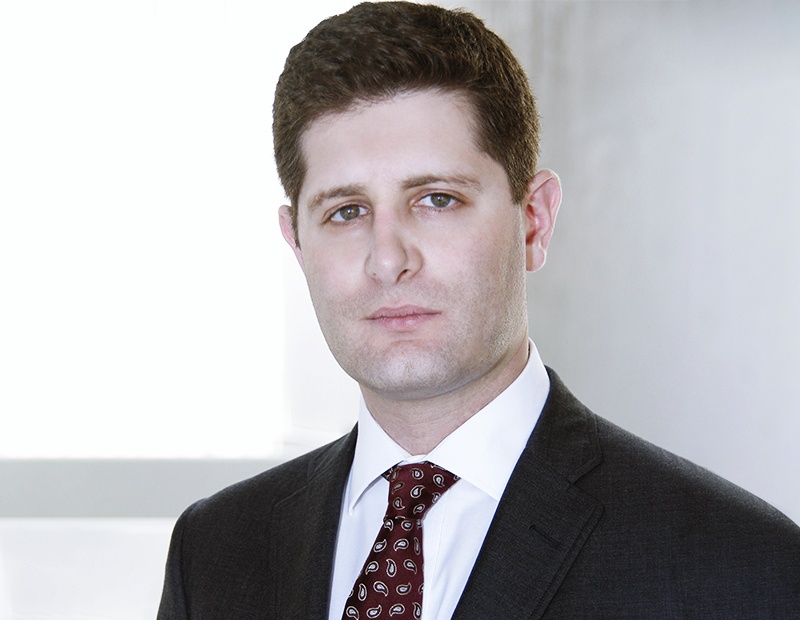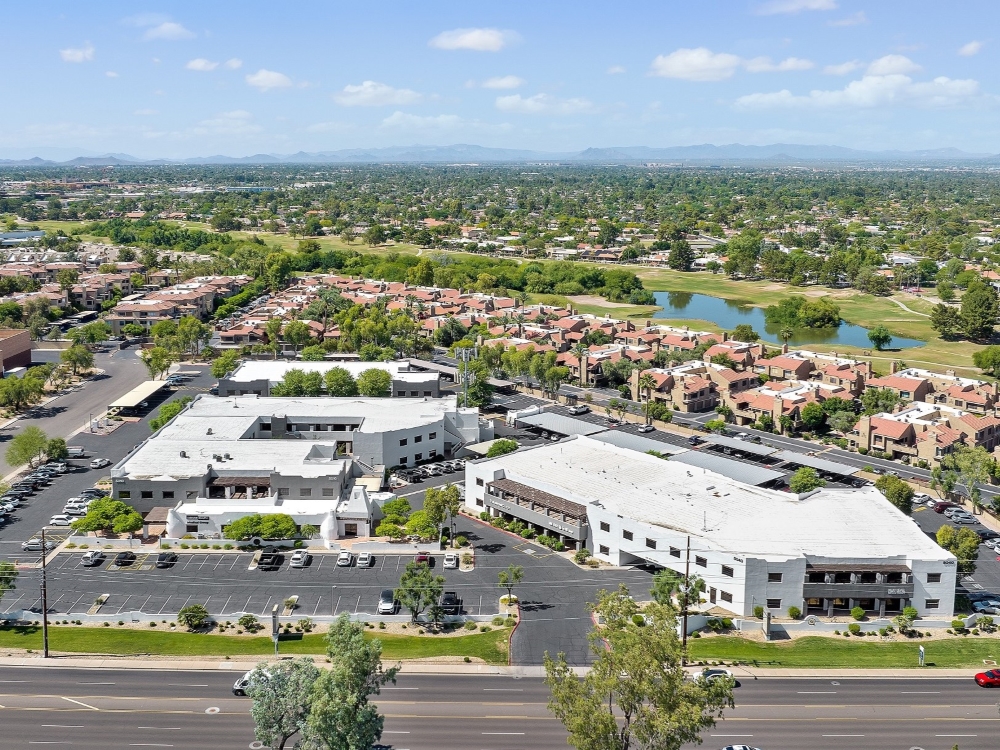What to Watch for in Tenant Risk
Brad Tisdahl, founder & CEO of specialty consulting firm Tenant Risk Assessment, on how to evaluate the financial viability of prospective commercial tenants in the current economic climate.
Tenant credit was broadly deteriorating before the health crisis, and the onset of the pandemic simply accelerated that trend, according to a report from Tenant Risk Assessment, a real estate company that evaluates the areas where landlords are most vulnerable.
Founder & CEO Brad Tisdahl believes “tenant credit is more important than ever right now,” so landlords need to pay extra attention to potential commercial tenants’ financial stability. In the interview below, Tisdahl discusses best practices in tenant risk assessment and offers his insights on how to appraise prospective tenants in the current economic climate.
READ ALSO: How Property Managers Can Stay on Top of the Crisis
What are you hearing these days about troubled leases in various sectors?
Tisdahl: It seems very few sectors have been untouched by the pandemic, though we continue to see stress heavily concentrated within particular industries. With many clients, we are still addressing companies impacted during the early weeks of lockdowns across the U.S., which means we are looking at a large volume of restaurants and hospitality companies. We have also been looking at tenants in the travel and leisure sector, advertising, and oil and gas.
Food services and the restaurant sector were hardest-hit in the first stage. They typically have thin margins and rely on steady traffic throughout the day or during high-density hours. Currently, demand among consumers simply is not there. Many of these locations are owned by franchisees who do not have access to outside capital, unlike their company-owned peers. Some of the companies we are seeing are down 80 percent in revenues from the same period last year. Many landlords recognize this pain and are working to retain committed and valuable tenants who have sustainable businesses or add value to the property.
We believe that many small and medium-sized businesses were significantly helped by the CARES Act and the Small Business Administration’s Paycheck Protection Program. Currently, we are waiting to gauge the impact of the expiration of PPP on these businesses, but we believe more federal support is likely needed to improve small business solvency across sectors. As of late September, no immediate financial relief appears close at hand.
How do you recommend owners respond to challenging situations such as a tenant having difficulty keeping up with rent obligations?
Tisdahl: We suggest that all owners create a system to respond to tenant rent-relief requests. Create a framework or process that requires each tenant seeking relief to explicitly identify what they have done to limit expenses and shore up capital since the pandemic began, while responding to the dramatic shift in demand for products and services from consumers and businesses alike.
It is important to review pre-pandemic financial statements as well as year-to-date monthly results. This process allows owners to see which of their tenants were distressed before the pandemic began and gives them a sense of how the pandemic has impacted each tenant. Some tenants—particularly in the retail sector—were already struggling and seemed destined to retrench or even shutter their businesses. The pandemic accelerated and exacerbated those existing issues.
It is also important for each owner to evaluate the weighted average lease term and then look specifically at each lease requesting relief. This gives owners visibility into the economics of their leases and allows them to prioritize some tenants when offering relief. Each owner will also have to ask himself or herself if a particular tenant is an amenity to the building that adds value to other tenants, like a coffee shop or fitness studio. Many owners may want to specifically support these amenity tenants that add tangible or intangible value to the property.
What are the best ways an owner can protect himself from a high-risk tenant in the current economic environment?
Tisdahl: As practitioners of credit risk, we believe it is always important for owners to conduct their due diligence on all tenants signing new leases, regardless of the current economic climate. This means reviewing tenant financial statements, having a clear picture of the tenant’s business model, understanding a tenant and guarantor’s legal entity structure, and requesting an appropriate level of security consistent with both market conditions and a tenant’s credit.
As a response to the pandemic, the Fed has been flooding the market with liquidity to stabilize the financial system. How much has this helped owners and tenants so far?
Tisdahl: The Fed’s programs were created to ensure the stability of the financial sector and support major sources of employment in the private sector. The Fed’s response has been more than adequate in the short term to shore up bank balance sheets and ensure the movement of money through the economy. It is difficult to measure the trickle-down impact on owners and tenants in discrete terms, but we can see that the financial system continues to function with adequate liquidity and flexibility. Banks continue to lend both in the short and long term. Nonbank lenders, which are a significant source of capital today, are seeking opportunities for yield, so there is no shortage of liquidity for qualified borrowers.
In the longer term, we may see broader systemic issues like a devaluation of the dollar relative to other currencies, which could create additional headwinds for U.S. companies. If that materializes, it would likely be further down the road. However, if this happens, the impact would be nominally blunted by the dollar’s status as a reserve currency.
The pandemic is putting substantial strain on small and medium-sized businesses, and threatening their sustainability in the short term. Can owners do anything to help tenants with small businesses?
Tisdahl: When small and medium-sized businesses are under pressure, it is critical to determine whether these tenants are committed to their business. For those tenants, owners may want to be more flexible in providing rent relief. The uncertainty in the commercial real estate market should provide adequate incentive for owners to work with committed tenants. This will ultimately protect the weighted average lease term in the medium term and can help owners maintain debt service requirements due to certain rent deferral accounting rules.
What’s changed in the past six months in evaluating the viability of a commercial tenant?
Tisdahl: Tenant credit is more important than ever right now. We have always emphasized the importance of understanding tenant and guarantor legal entities. This is evident in tenants that utilize special purpose entities when signing leases. Owners should focus on getting the highest-level guarantor within a specific company to provide the greatest protection against bankruptcy and restructuring. Furthermore, owners should be focused on the near-term liquidity and longer-term solvency of their tenants. They should also be assessing the business models of any new tenants and their compatibility with the shifting demand profile as a result of the pandemic.
Please expand a bit on how the tenant risk assessment process differs in North America and Europe.
Tisdahl: While we do advise on leases in North America and Europe, we have not been engaged to review distressed tenants in Europe, so we are not able to offer firsthand knowledge. That being said, European governments have offered more generous financial support to companies and citizens than the U.S., and they were more effective in establishing public health protocols that limited the spread of the virus. Despite the concern around the recent uptick in cases in Europe, the broader government support offered provides a more stable foundation for a faster recovery.
The coworking movement appeared to be taking hold before the pandemic hit. How has the trend been affected in terms of evaluating tenants, lease terms and other issues?
Tisdahl: Coworking has always been very exposed to economic cycles. The current capital structure of the largest coworking companies is not readily compatible with the current economic conditions. They need cash flow to service their significant fixed costs. Some of these companies have secured additional funding from investors to stabilize operations in the near term, but most are looking for support from their landlords to weather the storm. We have seen bankruptcies as a result for others, which offers an opportunity to exit or restructure existing leases.
The short-term future of many coworking operators is tenuous. We do, however, believe there is a post-pandemic scenario where coworking thrives. It has the potential to offer companies greater flexibility for their space needs, and established operators could be at an advantage to meet this new demand.
How willing are owners to modify lease terms in response to current conditions?
Tisdahl: The owners that we advise are willing to work with their tenants. They need to be sensible in how they approach relief with their tenants to ensure they are being good fiduciaries, but ultimately, they recognize that these are uncertain times and that they need to be flexible, when warranted.
To what extent should owners underwrite prospective tenants differently in the current conditions?
Tisdahl: Owners have benefited from a relatively robust market over the past 10 years. The pandemic served to highlight the fragile credit conditions in the overall market, especially within industries like restaurants, hospitality, travel and lodging. Going forward, we would like to see greater focus on tenant credit as a factor, when weighing security in new leases. This environment has changed the landlord’s relationship with its tenant. Lenders and investors are not as willing or able to support companies, so tenants are looking to landlords as a de facto lender of last resort.
Going forward, we would like to see owners recognize their evolving position within the financial sector and command security requisite with a tenant’s credit. Owners may also consider lease structures consistent with the risks they are taking on certain tenants, to find ways to benefit from a tenant’s upside in the same way an investor or mezzanine lender would.
When do you expect the economy to reach pre-pandemic levels? What will the pandemic have changed by then in tenant risk assessment?
Tisdahl: Unfortunately, we cannot see the future, but we recognize that there will be a long tail to this recovery. The first benchmark toward normalcy will be a safe and effective public health solution to the pandemic. The longer we stay at home, the more consumers’ habits will change, and the harder it will be to predict future behavior. There must be trust in the public health solution, and even when it’s available, it will take time to distribute and prove its efficacy. We view the current challenges as ongoing through at least the next year, if not longer.











You must be logged in to post a comment.